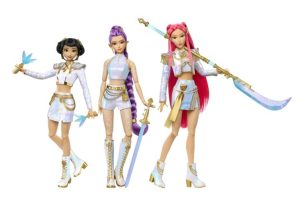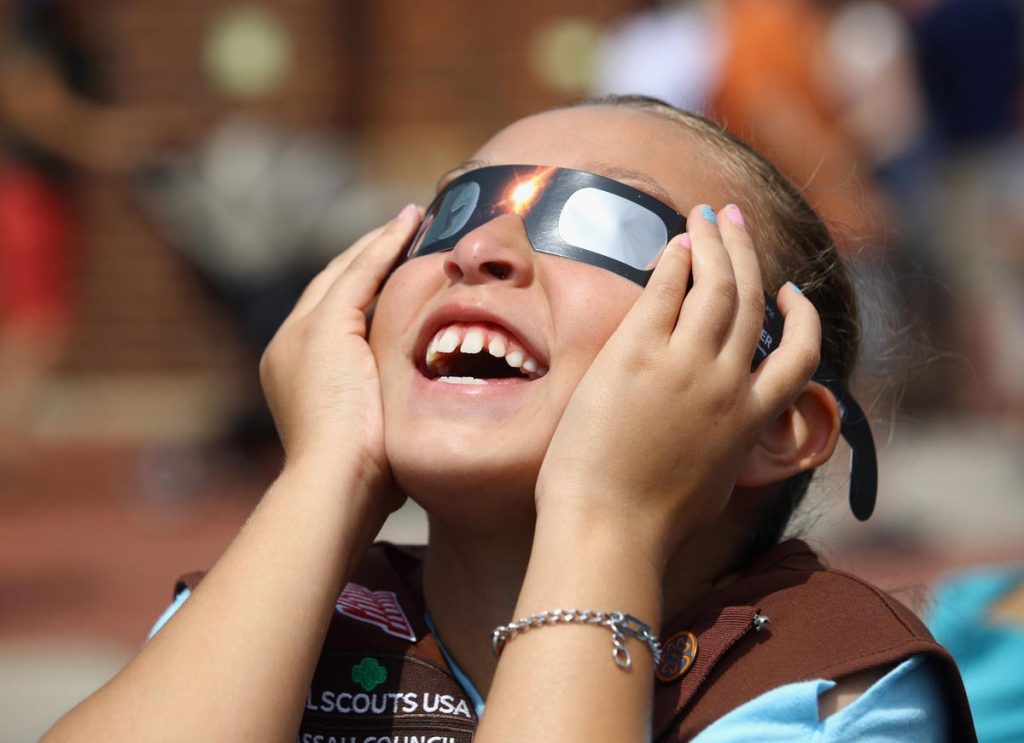I’m the world’s only “eclipse journalist.” For the very latest on the “ring of fire” solar eclipse—including special travel and lodging options—please press the big blue “follow” button above or check my main feed for daily articles.
On Saturday, October 14, a solar eclipse will be seen from across the U.S. and beyond—and there will a scramble for solar eclipse glasses.
Solar eclipse glasses don’t have to be complicated. They’re widely available online and, if you know exactly where to buy them from, you can guarantee they are safe to use.
Here’s everything you need to know about buying safe solar eclipse glasses:
Who Makes Solar Protection Glasses
There are two manufacturers of solar protection glasses in the U.S.—American Paper Optics and Rainbow Symphony (the latter in conjunction with Thousand Oaks Optical). In Europe, Baader Planetarium also produces solar projection materials, but they’re not directly sold in the U.S. “They’re all equally effective and reliable,” says Chou.
How To Know If Solar Eclipse Glasses Are Safe
Products must meet the ISO 12312-2 international safety standard. They’re sold directly to the public, but also via a network of distributors and resellers. The American Astronomical Society keeps a list of Suppliers of Safe Solar Filters & Viewers and also has a primer on How Can You Tell If Your Eclipse Glasses or Handheld Solar Viewers Are Safe?
Where To Buy Safe Solar Eclipse Glasses
“Look at the list of suppliers of safe solar viewers in the eye safety section of the AAS website,” said Dr. Rick Fienberg, Project Manager, AAS Solar Eclipse Task Force at the American Astronomical Society, at a seminar on eclipse eye safety in June.
If you purchase solar eclipse glasses from a local shop then check the labeling for the logos of the main manufacturers (likely American Paper Optics or Rainbow Symphony/Thousand Oaks Optical).
Or you you get them from a major science museum or by attending a local eclipse observing event—many of which will have vendors selling safe solar eclipse glasses.
What To Do If Solar Eclipse Glasses Are Sold Out
If there are supply problems where you are then don’t panic. Don’t make your own, don’t use sunglasses and don’t use welding glass (sometimes the latter if safe, but only if it’s Grade 13 or 14, which is hard to check). All you really need to do is fine one person with a pair. “One problem we saw in 2017 was that right before the eclipse they were all sold out and people started freaking out,” said Fienberg. “But it’s not like you’re going to put these glasses on and stare at the sun for an hour—so just share them around.”
You’re not going to be tracking the moon across the sun in real-time—the occasional glance is plenty enough.
How To Avoid Counterfeit Solar Protection Glasses
Price is also key. “If you are seeing a really low price it’s probably not authentic,” says Chou, who suggests that – market forces not withstanding – the typical retail price on solar eclipse glasses and viewers is approximately $5. “If you’re paying more than that it’s probably extortionate and if you’re paying much less than that it’s probably a different product,” Chou. However, he points out that the price often goes up just before a solar eclipse as time gets short and people get desperate.
Just prior to the last total solar eclipse in the U.S. on August 21, 2017, controversy erupted around counterfeit eclipse glasses, with Amazon banning all sales. Many were being imported from China that were labeled as ISO-compliant without being properly tested.
What Solar Eclipse Glasses Actually Do
Received wisdom is that solar eclipse glasses protect your eyes from injury by ultraviolet and infrared radiation from the sun. That’s not actually true. “The main threat is actually the short wavelength bluish visible light – that’s the stuff that’s going to hurt your retina,” said Fienberg. “If you look at the solar spectrum, it peaks right where our eyes are most sensitive, a consequence of the fact that we evolved under the sun.” Short wavelength sunlight – which solar eclipse glasses reduce across most of that spectrum – doesn’t so much cause a burn as a photochemical reaction. “Usually, you can recover from it,” said Fienberg.
That’s not the case if you look at the sun through binoculars or a telescope, where the amount of sunlight being concentrated is intense. “Not only would you get a photochemical injury, but you’ll also get a retinal burn – and that you cannot recover from.”
How Solar Eclipse Glasses Are Made
There are two basic approaches to making solar eclipse glasses. “Polyester film is passed over boiling aluminum to get the aluminum-coated polyester filter materials,” says Chou. That’s what you’ll find in solar protection glasses. The other is a dark polymer material, a resin impregnated with carbon black. “It’s essentially the modern-day equivalent of smoked glass where you’re just putting carbon particles into a medium,” says Chou.
The manufacturing process determines how stiff the filter is, but also what the sun will look like. “It has to do with the transmission qualities of the aluminum coating as opposed to the carbon black material,” says Chou. Aluminum will transmit primarily in the short wavelength part of the visible spectrum. Carbon absorbs virtually all of the short wavelength light, only allowing longer wavelengths of yellow and red through. “They’re safe that when used as directed,” says Chou.
I am the editor of WhenIsTheNextEclipse.com and author of “The Complete Guide To The Great North American Eclipse of April 8, 2024.”
Wishing you clear skies and wide eyes.
Read the full article here








